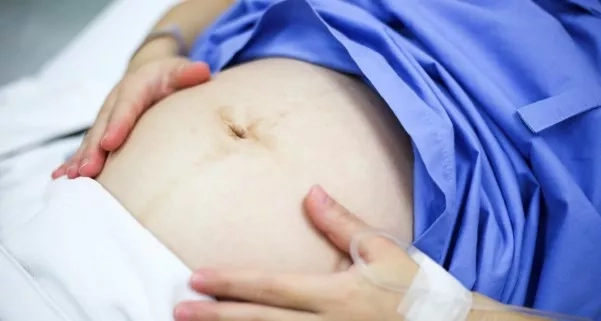Clearing the misconceptions: pain relief in labour
By Dr. Arthur Tseng
Consultant, Obstetrician and Gynaecologist, Urogynaecologist
MBChB (Sheffield), MRCOG (UK)

For countless women, the joy of pregnancy is also intermixed with a fear of labour and the pain that is necessary for delivery. This fear is compounded by all the horror stories of labour pain-relief methods that do not work, or worse still, cause unpleasant or dangerous side effects and complications. This article will attempt to dispel certain myths and allay fears that there are good and effective methods of pain-relief for labouring women.
When will you start experiencing labour pain?
As the pregnancy approaches term, which is defined as 37 completed weeks of gestation, the womb (uterus) starts to contract. What were previously painless Braxton-Hick contractions ends with transition to painful labour contractions. Initially, these contractions are irregular but progressively become regular and more intense. In women with their first pregnancy, regular contractions happen about once every 10 minutes. In women with their second pregnancy or later, regular contractions happen about once every 15 minutes or in shorter cycles. Typically, the cervix will be dilated to three to four centimetres in diameter. The water bag may also rupture, causing leakage of amniotic fluid; and there may be a "show" where the mucus plug is dislodged from the dilating cervix, accompanied by blood.
Stages of labour
In the first stage of labour, the cervix opens up from 3 to 10 centimetres. This can take 8 to 10 hours for a first-time mother and, on average, 4 to 6 hours for a woman with more than one child. In the second stage of labour, when the baby is born by pushing in time with contractions, it can take up to two hours for a woman who has never given birth before and up to an hour for a woman who has given birth before. After delivery, cord blood banking may be performed, and active management of the third stage of labour reduces the risk of severe bleeding (post-partum haemorrhage). This entails delivering the placenta by controlled cord traction, manually rubbing the uterus to cause a sustained contraction , and various medications to stop bleeding. Most women want to breastfeed their babies exclusively, and the team in the delivery room would encourage this right away, along with skin-to-skin contact to help the mother and her baby bond.

It would appear that labour does take a certain length of time, during which there will be regular contraction pains to contend with. Pain is debilitating when it occurs repetitively; it saps our concentration and strength. It also causes various bodily changes in the labouring mother, increasing the workload of the mother’s heart, increasing blood pressure, reducing placental blood flow and causing uncoordinated uterine contractions, thus leading to prolonged labour and a greater chance of foetal distress. As such, any method of blocking labour pains would intuitively improve maternal and foetal outcomes and likely shorten the duration of labour.
How to manage labour pain?
There are non-pharmacological and pharmacological methods of reducing or blocking labour pains. In terms of non-pharmacological pain-reducing methods, one of the most useful is that of continuous labour support. Someone there to help the labouring mother, like a partner or spouse, a relative, a nurse on staff, or a midwife, has been shown to shorten the length of labour, decrease the number of times the mother asks for painkillers, improve the overall labor experience, and decrease the number of times she needs an assisted instrumental delivery or a Caesarean section.1 Other methods that appear to work are acupuncture, hypno-birthing, and water baths. Acupuncture does relieve pain, thus reducing the need for pharmacological analgesics. It is safe if performed by an expert. Hypno-birthing does reduce the need for further analgesics and improves the overall birthing experience. Water baths can temporarily ease pain and muscle spasms, and they don't raise the risk of foetal distress. Hence, it is considered safe for a labouring mother to have a warm bath.2 Massage therapy, touch therapy, certain birthing positions for the mother, aromatherapy, audial analgesia, and Transcutaneous Electrical Nerve Stimulation (TENS), which is supposed to ease pain by stimulating nerves with an electronic device, have not been shown to work.
In hospitals, all maternity wards and delivery rooms have the tools and services needed for effective pharmacological pain relief. There are currently three available: Entonox gas analgesia, Pethidine injections, and Epidural analgesia. They have varying effectiveness and are suitable for different occasions, and the effectiveness can be quantified by using a Wong-Baker visual analogue scale (VAS) system – where a pain-score of ‘0’ is completely pain-free, and ‘10’ would be the worst possible pain experienced by an individual.
Entonox is considered the mildest of the three pharmacological pain-relief methods. Entonox is a mixture of nitrous oxide (laughing gas) and oxygen. The combination of gases does provide mild analgesia from labour pains. To get the most out of Entonox, women in labour do have to time when they breathe it in with the start of a contraction. As Entonox stays in the body system for only as long as the gas is inhaled, analgesia wears off rapidly once room air is inhaled. As such, Entonox is very safe for the mother and the unborn baby, as well as the healthcare workers in the delivery suite.4 When used to control labor pain, Entonox effectively reduces the pain score by 1 to 2 points.
Intramuscular (IM) Pethidine injection is another common painkiller. It is made from opium and has been used since the 1970s. Both nursing and medical personnel can administer Pethidine every 4 to 6 hours. Opium-derived analgesia causes nausea and vomiting; as such, an anti-nausea agent is usually given at the same time (IM Maxalon or Stemetil) as a preventative agent. Pethidine injections can be given more than once, but this causes the drug to build up in the body. It is also not a good idea if the baby is about to be born soon, since the highest concentrations in the foetus are found 2 hours after the injection. This can lead to a risk of sedation in the newborn, which may require neonatal resuscitation.5 When used during labour at appropriate times, pethidine effectively reduces the pain score by 4 to 5 points.

Epidural analgesia is currently used extensively for labour pain management, and involves the introduction of local anaesthetic solution into the space surrounding the spinal cord nerves (the epidural space), to produce markedly diminished or absent pain perception, via a fine and flexible plastic tube, that is inserted by an anaesthetist. It is effective in reducing pain scores by 8 to 9 points. Frequently, labouring women are completely pain-free after an epidural, compared to other simpler forms of analgesia, and they can still opt for an epidural if the side effects of other medications are intolerable, or if their labour is advanced and Pethidine cannot be administered safely.
Women with medical conditions also benefit from an epidural. Women with high blood pressure or pre-eclampsia have better control of their blood pressure during labour, and the blood flow to the placenta is better, which makes it less likely that the baby will be in distress during labor and delivery, especially if the baby is small. Diabetic mothers and women with gestational diabetes have a better time keeping their blood sugar under control during labour. With the right pain relief, they can also have smooth instrumental deliveries or Caesarean sections if they need to. In cases of twin pregnancy, breech babies, and vaginal birth after caesarean (VBAC), there is a higher risk of conversion to caesarean section, and an epidural facilitates a smooth transition from labour to caesarean when required.6 Patients with clotting problems due to medical conditions, back skin infections, spinal problems, a history of spinal surgery, and severe cardiac disease are not suitable candidates for an epidural.
Side effects of epidural
When one uses an epidural, one of the commonest side effects experienced is numbness and weakness of the lower body and legs due to a variable degree of motor nerve block. Other side effects commonly felt are nausea and vomiting, shivering, transient blood pressure changes, and difficulty with passing urine. Hence, many patients have an indwelling catheter inserted once they are on an epidural. Other uncommon side effects are those of inadequate pain relief; a one-sided block (where the patient experiences pain on one side of the body and not the other); and rapid progression of labour, such that the labour process is shortened dramatically, and delivery becomes imminent. Rarely, there are very serious side effects like seizures and respiratory arrest.
Aside from the side effects, there are some myths about what an epidural is and how it works. One such myth is that epidurals can result in long-term backaches. Another such myth is that epidurals may potentially harm the baby, or increase the risk of Caesarean section, and that epidurals cannot be used too early in labour.
It was found that 53 to 89% of pregnant women experience back pain during their pregnancy. Instead, the pain was caused by physiological changes associated with pregnancy, such as poor posture, spinal anatomical changes associated with pregnancy, hormonal changes resulting in ligament relaxation and water retention, all of which contribute to additional ligamentous laxity.7 Obstetricians say it's a good idea to go back to your old exercise routines, especially core body strengthening exercises, after giving birth to lower the risk of long-term back pain.
When should epidural be administered?
In one study, there was a comparison between epidurals given early before established labour had started and epidurals given later in established labour. It was found that patients who got an epidural early (when the cervix was less than 4 centimeters open) had shorter labours and didn't have a higher chance of needing a Caesarean section. It was also found that the babies delivered had better health assessment scores (Apgar scores), apart from superior pain relief. 8 It is thought that when a woman isn't in pain, her pelvic floor muscles relax, making it easier for the baby to move through the birth canal. This may be why labour shortages happen. It was found that using an epidural was linked to a better neonatal acid-base balance status. This is a way to measure peri-partum health, and it again suggests that using an epidural during labor keeps the placenta oxygenated and nourished for the baby.9

Many women don't like being in labour, and it shouldn't be okay for them to be in pain that can be eased with safe and quick methods of analgesia. It is said that a mother's request for pain relief during labor is a good enough reason to give it if there is no medical reason not to.10 So, knowing what kinds of pain relief are available and the pros and cons of each one helps patients feel more comfortable and, just as importantly, safer during labour, for both the mother and the baby.
References:
1) Simikin et al. Systemic review of 5 non-pharmacological methods of pain relief during labour. Am J Obstetrician Gynaecol 2002.
2) Smith et al. Complementary and alternative therapies for labour pain. Cochrane Database 2006.
3) Carroll et al. TENS does not relieve labour pain: a systemic review. Contemporary Reviews in O&G, 1997.
4) Rosen MA. Nitrous Oxide for labour pain, a systemic review. Am J OG 2002.
5) Briker et al. Parenteral opioids for labour, a systemic review. Am J OG 2002.
6) Reynolds et al. Analgesia in labour and acid-base balance: a meta-analysis comparing epidural with systemic opioid analgesia. BJOG 2002.
7) Lim, et al. Dispelling the myths of epidural relief in childbirth. SMJ 2006; 47(12):1096.
8) Wong CA, et al. the risk if caesarean delivery with neural oak analgesia given early versus late in labour. The NEJM 2005; 352(7).
9) Reynolds F, et al. Analgesia in labour and foetal acid-base balance: a meta-analysis comparing epidural with systemic opioid analgesia. Br J Obstetrician Gynaecol (BJOG) 2002.
10) ACOG Practice Bulletin No. 36: Obstetric Analgesia and Anaesthesia. Obstetrics & Gynaecology 2002; 100(1): 177-191.
Recent Blog Posts
- 01 Aug 2025
- 02 Jun 2025
- 28 Mar 2025
- 10 Nov 2023
- 19 Oct 2022
